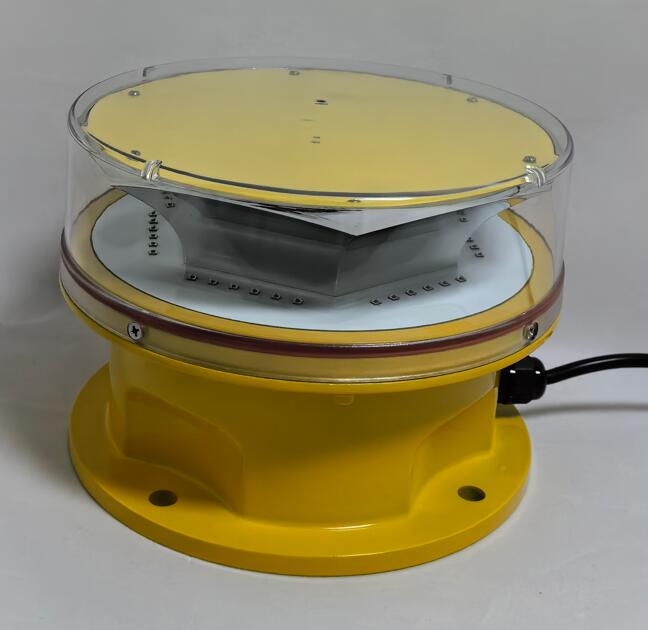Aviation Obstruction Light: The First Line of Defense in Airspace Safety
In the realm of aviation, where the margin for error is minimal, visibility is more than a convenience—it's a necessity. As cities grow upward and infrastructure expands outward, the potential for conflicts between man-made structures and aircraft increases. To safeguard aerial navigation, the aviation obstruction light serves as a critical visual signal, marking tall structures and alerting pilots to their presence. Simple in concept yet powerful in function, these lights form a vital part of global airspace safety systems.
What Is an Aviation Obstruction Light?
An aviation obstruction light is a high-intensity lighting device installed on structures that penetrate navigable airspace or could pose a hazard to flying aircraft. These lights are designed to emit bright, visible signals—red or white, steady or flashing—making structures clearly identifiable during night or low-visibility conditions.
Regulated by aviation authorities such as the FAA, ICAO, and EASA, obstruction lights are mandatory on structures that exceed specific height thresholds or are located near airports and flight paths. They are a key component of the obstruction marking and lighting standards outlined in documents like FAA AC 70/7460-1M and ICAO Annex 14.
Why Aviation Obstruction Lights Are Crucial
The importance of aviation obstruction lights lies in their ability to prevent mid-air collisions. Pilots rely heavily on visual cues, especially during low-level flight operations such as takeoffs, landings, and helicopter maneuvers. Without proper lighting, structures like towers, cranes, and wind turbines could become invisible hazards after sunset or in foggy conditions.

Obstruction lights serve three main purposes:
Alerting pilots to the presence of obstacles
| aviation obstruction light |
Complying with national and international aviation safety laws
Protecting both air traffic and infrastructure from accidents
| aviation obstruction lights |
Common Structures That Require Aviation Obstruction Lights
The use of aviation obstruction lights spans multiple industries and structure types. Typical applications include:
1. Telecommunication Towers
Often standing several hundred feet high, these towers are among the most common recipients of obstruction lights. Their remote placement and thin profiles make them especially dangerous without proper marking.
2. Wind Turbines
Wind farms, frequently located in isolated or elevated areas, must be clearly marked to prevent collisions during night flights or poor visibility conditions.
3. High-Rise Buildings and Skyscrapers
In urban environments, tall buildings near flight paths or heliports are required to install obstruction lights to ensure they are visible to approaching aircraft.
4. Construction Cranes
Temporary but tall, tower cranes near airports or hospital helipads require lighting throughout the duration of their use.
5. Bridges and Power Transmission Lines
Spanning wide distances and sometimes over water or valleys, these structures can pose serious risks if not lit properly.
Categories and Types of Aviation Obstruction Lights
Aviation obstruction lights are categorized by intensity level, light color, and operating mode. The main categories include:
1. Low-Intensity Lights
Usually red
Operate at night only
Suitable for structures under 150 feet (45 meters)
Example: FAA Type L-810 (steady-burning red)
2. Medium-Intensity Lights
Available in red (night) or white (day)
Used for structures 150–500 feet high
Can be flashing or steady
Example: FAA Type L-864 (flashing red)
3. High-Intensity Lights
Always white
Operate day and night
Required for structures over 500 feet or in areas with limited visual cues
Example: FAA Type L-856 (high-intensity white strobe)
4. Dual Lighting Systems
Combine white for daytime and red for nighttime
Offer full 24-hour marking capabilities
Ideal for urban or environmentally sensitive areas where red light reduces light pollution
Technical and Operational Features
Modern aviation obstruction light systems incorporate several advanced features:
LED technology for extended lifespan and reduced energy consumption
Automatic photocell control for dusk-to-dawn activation
Remote monitoring systems to report light failure in real-time
Weatherproof and corrosion-resistant enclosures
Integrated GPS or radar-based activation for aircraft proximity response
These features not only enhance performance but also simplify maintenance and reduce the operational burden on site owners.
Compliance and Legal Responsibilities
Compliance with obstruction lighting regulations is mandatory and enforceable. Operators and property owners must:
Install lights that meet certified standards
Conduct regular inspections and maintenance
Report outages promptly, often within 30 minutes
Repair or replace failed units within a specified timeframe (typically 15 days)
Non-compliance can lead to penalties, project delays, or liability in the event of an aviation incident.
Environmental and Community Considerations
While safety is the primary goal, aviation obstruction light systems must also consider environmental and social impacts. For instance:
Red lights are preferred in residential areas to reduce glare and light pollution.
Shielded or directional lights can limit spillover into unintended areas.
Radar-activated lighting can reduce night-time brightness by only activating when aircraft are nearby—preserving safety while respecting local communities and wildlife.
Balancing safety with sustainability is an emerging focus in obstruction lighting design and regulation.
The Role of Aviation Obstruction Lights in New Airspace Technologies
As airspace use evolves with the rise of drones, urban air mobility (UAM), and autonomous aircraft, the role of aviation obstruction lights is expanding. Structures previously considered safe due to their low elevation may now require lighting to accommodate lower-flying aerial vehicles.
Key trends influencing the future of obstruction lighting include:
Integration with drone traffic management systems
Dynamic lighting based on air traffic density
Smart infrastructure with remote diagnostics and predictive maintenance
Compatibility with unmanned aerial system detection technologies
These trends will require updated standards and innovative lighting solutions tailored to increasingly complex airspace environments.
The aviation obstruction light remains one of the most effective and universally recognized tools for enhancing airspace safety. From city skyscrapers to rural wind farms, these lights provide a simple yet vital function: alerting pilots to obstacles before it’s too late.
As technology advances and airspace usage diversifies, obstruction lighting systems will continue to adapt—smarter, more efficient, and increasingly integrated with broader air traffic management frameworks. Whether on a temporary crane or a towering broadcast mast, the aviation obstruction light stands as a guardian in the sky, quietly protecting lives with every flash.
